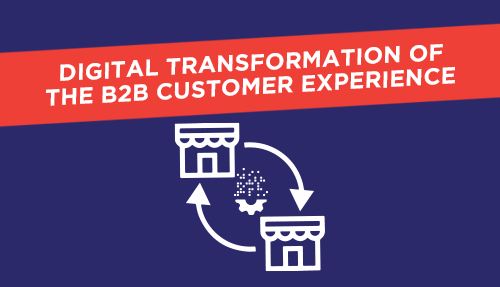Reading Time: 4 minutesSocial Beat recently concluded the Digital Leadership Summit for 2019 held at Bangalore. The event was a grand success. With industry leaders sharing their insights. Mr. Atin Chhabra – General Manager, Marketing at Schneider Electric shed light on the digital transformation of B2B Customer Experience for large and diverse organizations like Schneider Electric. Here are some of the highlights of the session.
- Linear supply models are outdated – customers now want experiences
- Digital Customer Experiences help brands attract, engage and transact with customers
- 70% of investments for Digital Capabilities go towards creating customer experiences
- 86% of customers will pay a 16% higher price if satisfied with the experience
No more linear supply models:
Gone are the days when companies introduced a product in the market and it had to be accepted by the consumers. Times have changed, today there are more platforms for consumers, more architectures to experiment on and more connected products. This gives rise to a demand-side play, consumers these days do not demand more products or services but a more engaging customer experience.
Mr. Atin speaks about how it wasn’t long ago when the competition was determined on the basis of products or services. Another company selling similar products or services they were considered as competition. However, that isn’t the case anymore. For a company like Schneider which deals with energy, management, and automation, the competitor for Schneider would be Amazon. This is solely because of the customer experience offered by companies like Amazon. The thin line between who competitors are and who offers a better experience is diminishing.
Change in Competitive Advantage
Traditionally competitive advantage was factored in on the basis of 2 key points which are:
- Lower cost
- Differentiation
However, gone are the days when competitive advantage meant low cost and differentiation. Today there are a number of companies that offer both lower costs while also being highly differentiated. One of the most important takeaways from this differentiated competitive advantage is the scale of operations and the experience they have within the specific domain. This indeed is competitive for any traditional company.
To adapt to this companies may look at case studies on big internet giants like Google, Uber, and Amazon, but this constitutes only 6% of the total companies in the world. Other than these big companies that make the 6% while the rest of the 94% of companies which have existed for more than a century or two. What is it that these traditional companies that make up the 94% have done? How do they compete with the big names? According to the statistics, these traditional companies who have implemented digital transformation strategies have seen a 9% increase in revenue. They have seen a whopping 26% increase in profitability. Not only does the digital transformation for companies help in money making but also helps in saving costs. These companies are known as digital masters.
Digital Masters look at digital transformation on two dimensions:
- Left-hand side – This side accounts for the Digital Capabilities (Google, AI, LinkedIn, Facebook, etc) introduced in the organization to be technologically sound and ready.
- Bottom side – This side accounts for the leadership capabilities. How digital talent is trained? How to upskill talent to think digital?
Digital Capabilities
Digital Capabilities today are spread across 3 different functions.
- Customer experience – How good the customer experience is
- Operations – this is all about the connected products, sensors, etc
- Business model – looking to reinvent business models or supplement existing business models.
According to public data, close to 70 percent of digital transformation investments go to digital customer experience. This is because over the course of time customers have also changed, this change is not limited to B2C but also B2B customers.
The change is such that 57 percent of the B2B customers have decided what to purchase even before contacting the vendor. Almost 55 percent are looking for B2B products on social media platforms other than LinkedIn. The most astonishing fact is that 86 percent is willing to pay 16 percent more price for an amazing experience. While a good digital experience is important for the digital footprint, it is important to have content to offer a good experience.
Digital Customer Experience
DCX or Digital Customer Experience is becoming the forefront to interact, engage and transact with customers. It is very important to get the basics of user experience correct.
Here are the four pillars for creating a digital customer experience function or strategy.
- Frame the digital challenge: At any large organization, the digital transformation is primarily run across various departments.
- Sustain the transformation
- Keep customers at the core
- Mobilize the organization
These four pillars need to be kept in mind while creating a digital customer experience strategy. As each pillar looks into important aspects of a digital customer experience this ensures the strategy covers these aspects.
Here are 4 pillars looked upon for the digital transformation agenda at Schneider:
- Secure: this function deals with cyber security which is essential when taking functions digital.
- Eco-Structure: these are the connected products, sensors that can provide data giving predictive analytics
- Operate for efficiency: integrating different platforms to create one platform with multiple functions
- Engage through experience: Schneider defines the metric of experience by looking at the digital net satisfaction score. When this score is equal to the country’s net promoter score it is considered to be delivering an experience. This translates to the customer being happy with the platforms as well as the services.
Digital Marketing was considered to be the future of marketing until a few years ago but of late it has all boiled down to digital customer experience. This digital customer experience works across the entire company. It is important to increase the competence of the people, while hiring is possible, the most effective way is by upskilling and strong digital community program. The top-down approach helps in building a stronger digital community within an organization rather than hiring a small group.






